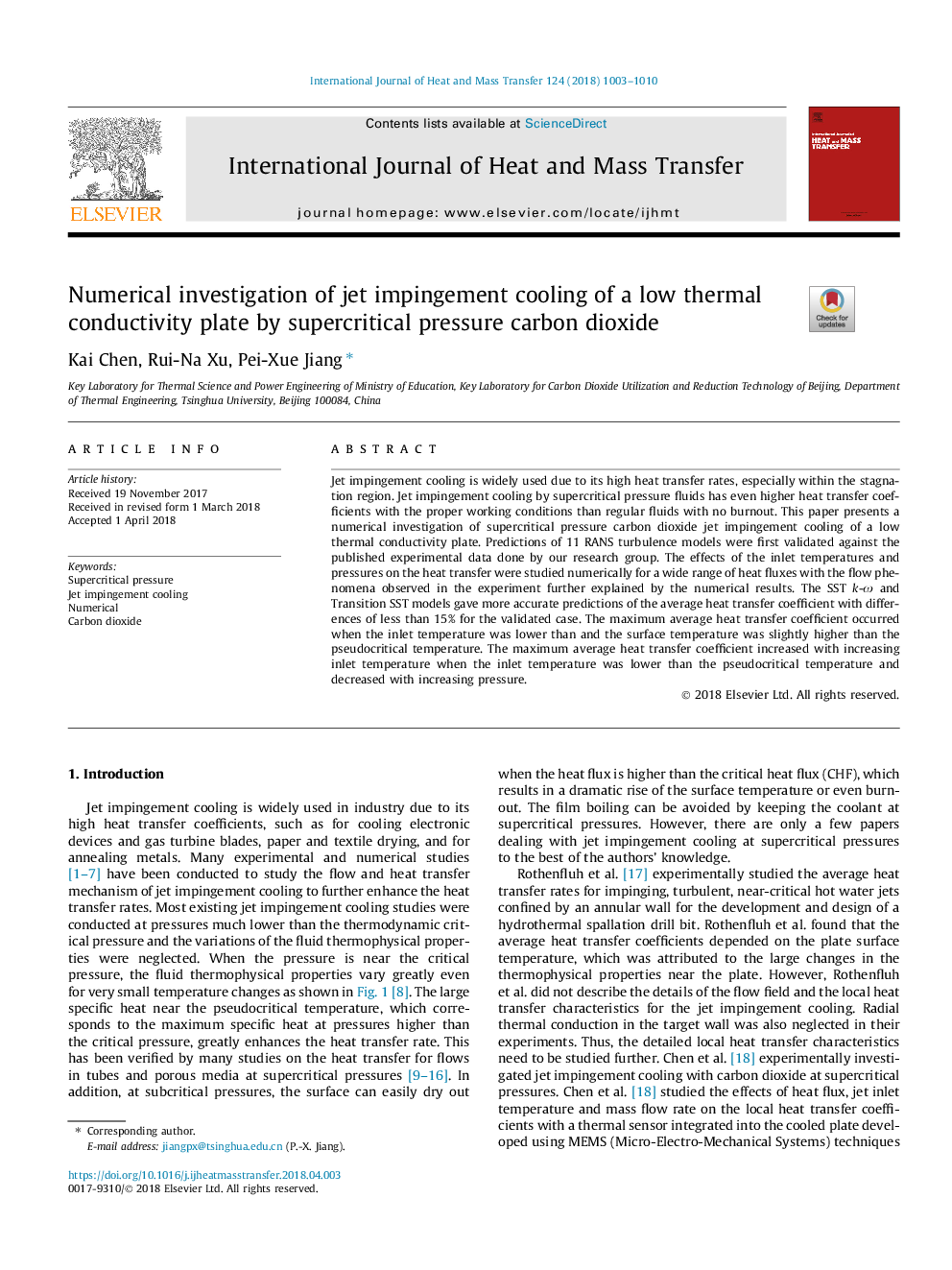| Article ID | Journal | Published Year | Pages | File Type |
|---|---|---|---|---|
| 7054273 | International Journal of Heat and Mass Transfer | 2018 | 8 Pages |
Abstract
Jet impingement cooling is widely used due to its high heat transfer rates, especially within the stagnation region. Jet impingement cooling by supercritical pressure fluids has even higher heat transfer coefficients with the proper working conditions than regular fluids with no burnout. This paper presents a numerical investigation of supercritical pressure carbon dioxide jet impingement cooling of a low thermal conductivity plate. Predictions of 11 RANS turbulence models were first validated against the published experimental data done by our research group. The effects of the inlet temperatures and pressures on the heat transfer were studied numerically for a wide range of heat fluxes with the flow phenomena observed in the experiment further explained by the numerical results. The SST k-Ï and Transition SST models gave more accurate predictions of the average heat transfer coefficient with differences of less than 15% for the validated case. The maximum average heat transfer coefficient occurred when the inlet temperature was lower than and the surface temperature was slightly higher than the pseudocritical temperature. The maximum average heat transfer coefficient increased with increasing inlet temperature when the inlet temperature was lower than the pseudocritical temperature and decreased with increasing pressure.
Related Topics
Physical Sciences and Engineering
Chemical Engineering
Fluid Flow and Transfer Processes
Authors
Kai Chen, Rui-Na Xu, Pei-Xue Jiang,
